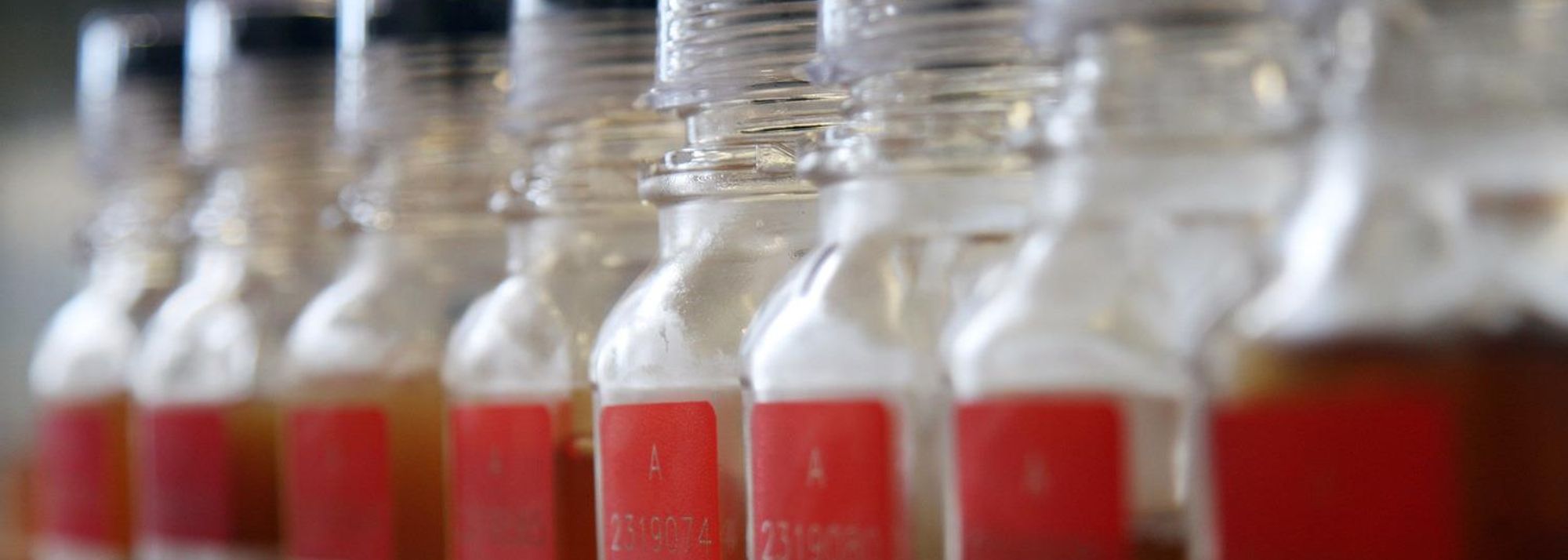Doping control samples (© Getty Images)
The IAAF World Championships Moscow 2013 will be held in the Russian capital between 10 to 18 August and will witness the most comprehensive anti-doping programme in the history of the 30-year-old event.
Below is a brief Q-and-A to explain the far-reaching strategy designed to catch the cheats.
Q: What is the IAAF’s approach to testing during the World Championships?
A: The IAAF order the tests, supervise the tests and check that they carried out in the proper way both for in-competition tests at the World Championships and out-of-competition tests for athletes on the IAAF’s registered testing programme.
At the World Championships the IAAF are involved with the practical and field aspects of the implementation of the doping tests.
Q: Can you explain the anti-doping strategy for the World Championships?
A: As far as testing is concerned it is three-fold.
The first part is the out-of-competition testing programme, which takes place in the period up to two months preceding the World Championships. The IAAF work with local agencies and ask national teams to notify us of their whereabouts before the event and commit to between 150-250 tests. Training camps and some teams will be targeted.
Q: Okay, so what about blood-testing?
A: This second part of the IAAF’s approach will be a large-scale pre-competition blood tests implemented for an athlete’s biological passport. This was first carried out at the 2011 World Championships in Daegu a few days before the event. This will be done on site at the athletes’ hotels in Moscow.
If any athletes show any abnormal blood values then the IAAF will carry out a follow up urine test. This will allow the testers the possibility to detect for substances such as EPO.
Q: What is the purpose of blood testing?
A: In the context of the passport, the IAAF adopt both a vertical and horizontal approach.
The vertical allows the IAAF to collect as much data as possible on athletes’ baseline values per gender, per discipline, per nation, which later helps with the evaluation of individual profiles.
The IAAF will then have the evidence to contradict any statements made by athletes, such as: “ I am an elite athlete and therefore different, or I live or train at altitude which explains the values of my profile.”
By contrast, the horizontal approach of more regular testing builds up an athlete’s individual profile. The point of the passport is regular testing over a period of time, which allows for monitoring the variation and values over a period of time. A one-off test means nothing in terms of the passport.
Q: What of the IAAF’s in-competition anti-doping programme?
A: This is the third strand to the IAAF’s anti-doping strategy at the World Championships.
In-competition urine tests will be carried out for the top three finishers in each event immediately after the race. In addition, some athletes will be tested by a random draw and some target testing will be done. A total of between 450-500 urine tests will be carried out during the Championships.
Q: Very few athletes test positive at World Championships, so what is the purpose of the in-competition programme?
A: The in-competition tests act as a deterrent. They are done to protect the integrity of the competition.
Q: What is the difference between blood and urine testing?
A: They are completely different. The blood test – in the context of the passport – is a measurement or screening of biomarkers; whereas urine tests are carried out to detect a possible prohibited substance. Urine tests are either positive or negative; blood tests are just a series of measurements which are added to other measurements to monitor the valuation.
Q: Can you explain the process of the blood and urine testing?
A: The blood tests are taken in three tubes. One tube will be taken to a WADA accredited laboratory in Moscow for screening of the haematological parameters (indicating blood manipulation or EPO doping). The other two tubes will be taken and frozen at the Moscow laboratory and then transported after the World Championships to a specialist lab in Lausanne for other screening parameters, including testosterone levels and growth hormone markers.
The urine tests will be transported to the Moscow laboratory to look for prohibited substances. The results should be available within 48 hours – although results can take longer for special analyses (e.g. EPO, IRMS).
Steve Landells for the IAAF



